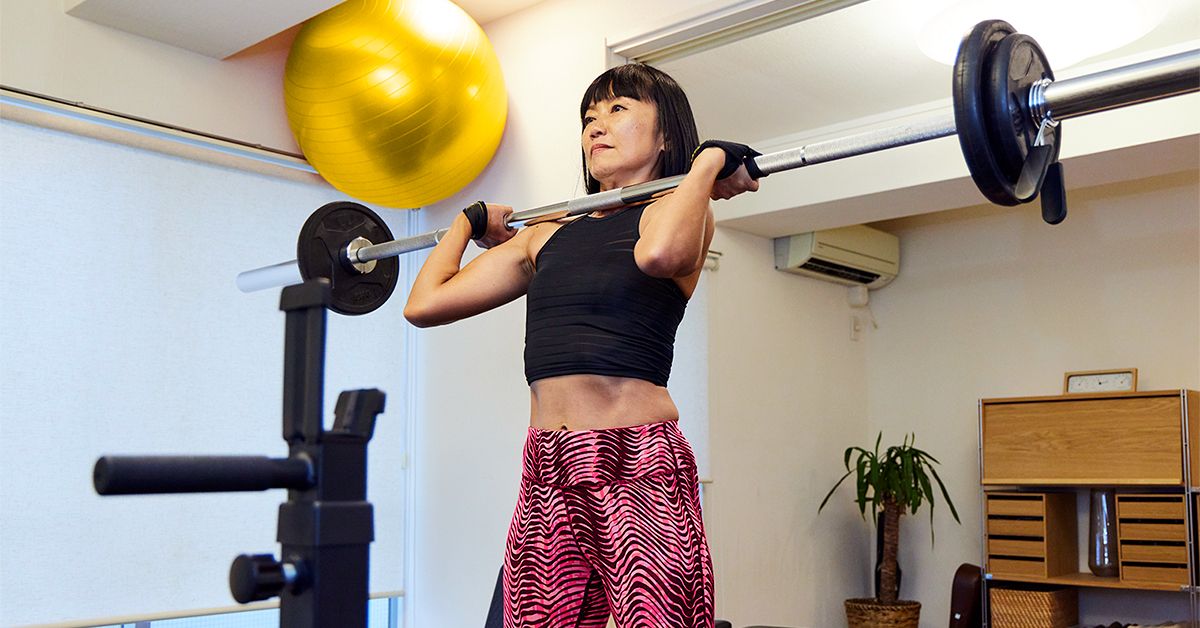Unpack the benefits and techniques of the overhead press, a staple strength exercise that enhances muscular and functional performance.
Ready to elevate your workout routine? Meet the overhead press — a classic move that works the deltoids, triceps, upper pecs, and core.
Also called the shoulder, strict, or military press, this exercise is a staple in weightlifting. Whether with a barbell or dumbbell, it enhances upper body strength, muscle size, coordination, and overhead function.
Master this move and join the pantheon of gym gods and goddesses. Keep reading to learn how.

Mastering the overhead press begins with proper technique to maximize gains and minimize injury. Here’s a step-by-step guide to get you pressing like a pro:
- Start with your grip: Position your hands just outside shoulder width on the barbell. Make sure your grip is firm.
- Position the barbell: Begin with the bar resting on your shoulders and clavicles, with your elbows slightly in front of the bar.
- Stance and posture: Stand with your feet shoulder-width apart. Keep your core tight and your back straight.
- Initiate the lift: Breathe in and press the bar straight upward, exhaling as you push. Your head should slightly move back to allow the bar to pass in front of your face.
- Lockout: Fully extend your arms overhead with the barbell stable. Ensure your torso and legs remain straight and engaged.
- Return to start: Lower the bar back down to your shoulders under control, preparing for the next rep.
The overhead press isn’t just a show of strength — it’s a cornerstone exercise with a roster of rewards that extend beyond muscle building. Here’s why incorporating this powerful lift into your routine is a wise move:
- Increases shoulder strength: The overhead press targets your deltoids like few other exercises can, carving out those coveted shoulder caps and increasing shoulder strength and stability.
- Develops upper body: This lift requires the triceps, upper pectorals, and back muscles to hoist that weight overhead.
- Engages core: Stabilizing your body under a weight overhead means your abs and obliques work overtime, resulting in a stronger, more resilient core.
- Boosts metabolism: Engaging multiple large muscle groups burns a ton of calories during and after your workout, boosting your metabolism and enhancing fat loss.
- Improves posture and balance: Regularly pressing weights overhead teaches your body to stabilize under load, improving your balance and posture and making you less prone to injuries.
- Builds functional fitness: With overhead press training, you’ll find everyday activities like stowing luggage or lifting a child easier and safer.
To mix things up or adjust the difficulty of your overhead press, consider these variations:
- Push press: Incorporate a slight knee bend and explosive movement to drive heavier weights overhead.
- Seated overhead press: Perform the press while seated on a bench to remove lower-body assistance and focus more on upper-body strength.
- Arnold press: Start with dumbbells in front of you, palms facing your shoulders, and rotate your wrists as you press up for increased shoulder muscle activation.
The overhead press is a comprehensive upper body exercise that targets:
- deltoids
- triceps
- upper pectorals
- core muscles
Avoid these frequent overhead press mistakes to improve your form and effectiveness:
- Arching the back: This can lead to lower back strain. Keep your core engaged and maintain a neutral spine.
- Flaring the elbows: Puts undue stress on the shoulders. Keep elbows slightly in front of the bar.
- Using momentum: Avoid using a bounce from your lower body; the movement should be strict and controlled from the shoulders.
It’s crucial to perform the overhead press safely to avoid injuries. Here are some tips:
- Warm-up properly: Jump-start your muscles with a good warm-up routine, including dynamic stretches and lighter shoulder-centric exercises.
- Mind your grip and form: A secure and correct form are your first defenses against injury. To start and push straight up, ensure your hands are positioned just outside your shoulders, your wrists are stable, and your elbows are slightly in front of the bar.
- Maintain a tight core: Activating your core throughout the lift is non-negotiable. It stabilizes your entire body and reduces the risk of compromising your back, especially under heavy loads.
- Use a controlled pace: Rushing through your reps increases the chance of losing form and potentially hurting yourself. Lift and lower the weight in a controlled manner to maintain muscle engagement and form integrity.
- Use a spotter or safety rack: If you’re lifting heavy objects, a spotter can provide extra safety. Alternatively, set up safety racks or use a power cage to catch the bar if you lose control.
The overhead press is a potent tool in your fitness arsenal, perfect for building strength and enhancing muscular coordination. But remember to warm up, focus on form, and keep that core tight to prevent injuries and maximize gains.

